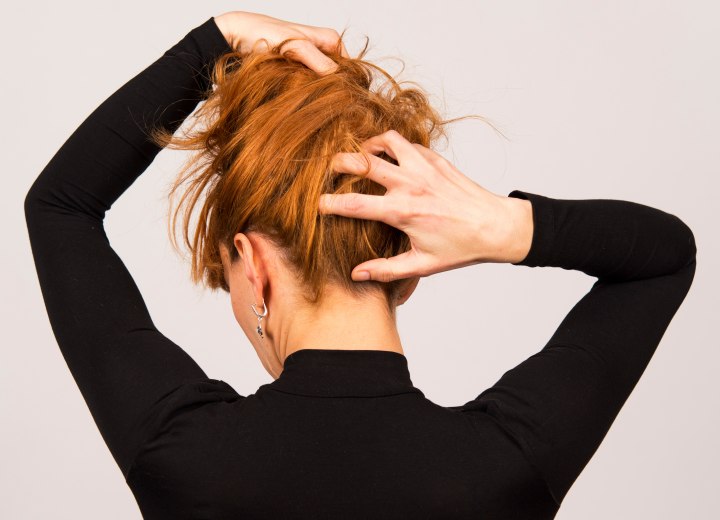Bald Spot

When I checked it out more closely, it doesn't look like a full bald spot yet, or at least not a severe one. Is there any way I can thicken my hair up? I have thin hair all around, but it's never been this noticeable before. Maybe I'm just not someone who can successfully grow their hair out long? Any help would be much appreciated!
The truth is that hair loss patterns are influenced by multiple genes from both parents, not just one parent or the other. While there is a significant gene on the X chromosome that affects hair loss (which women inherit from their fathers and pass to their sons), there are actually dozens of other genetic factors scattered throughout your DNA that come from both your mother and father. Recent studies have identified over 200 genetic variants that can influence hair thickness, growth patterns, and susceptibility to thinning. So yes, you absolutely can inherit hair loss tendencies from your father's side of the family, just as much as from your mother's side.
What you're noticing could be several different things. Since you mentioned you've been growing your hair out, the added weight and length might be making existing thin areas more noticeable than when your hair was shorter. Longer hair can sometimes reveal patterns that weren't obvious before, especially in areas like the crown or back of the head where we don't typically look closely in the mirror.
It's also worth considering that hair naturally goes through cycles of growth, rest, and shedding. Sometimes a larger number of hairs in one area can enter the shedding phase simultaneously, creating temporary thin spots that eventually fill back in. Stress, hormonal changes, nutritional factors, or even how you're styling your hair as it grows longer could all contribute to what you're seeing.
For thickening your hair, there are several approaches you might consider. Gentle scalp massage can help improve circulation to hair follicles, and using volumizing products specifically designed for fine hair can create the appearance of fuller hair. Some people find that certain hairstyles and cuts work better with their natural hair texture to maximize the appearance of thickness. However, it's important to be realistic about what topical treatments can and cannot accomplish.
If you're genuinely concerned about progressive thinning, especially if it seems to be getting worse over time, it would be wise to consult with a dermatologist. A dermatologist can examine your scalp more thoroughly and determine whether what you're seeing is normal variation, a temporary condition, or something that might benefit from treatment. There are various types of hair loss conditions and each has different characteristics and treatment options.
©Hairfinder.com
See also:
Hair and genes
Hereditary hair color